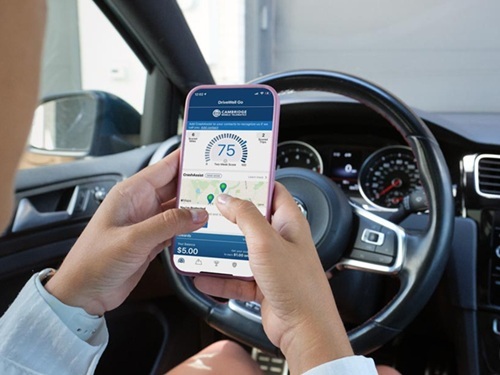According to recent blog post by the Insurance Institute for Highway Safety, the growing use of safe-driving mobile applications could deliver a completely new data source with many unique advantages to transportation safety researchers.
[Above image by IIHS]
Unlike data from more traditional sources, telematics data from safe-driving apps are collected on every motorist over the entire duration of their trips – all interlinked with time and location information to provide vital context. This means it’s possible to know exactly what a driver was doing throughout a trip as well as in the moments before a crash.
In that blog post, Eric Teoh – director of statistical services for IIHS – contends that, as the pool of users grows, the broader use of anonymous telematics data could lead to a more complete understanding of cellphone distraction and speeding, more precise studies of policy and infrastructure changes, and perhaps the development of new safety interventions.

“To study drivers’ everyday behavior, we rely on methods like self-reporting surveys, roadside observation studies, tube counters to measure speeds, and naturalistic studies in which participants agree to drive a car equipped with a camera and other monitoring technology,” Teoh said. “But all of these sources are missing some parts of the picture.”
He explained that crash reports and claims information don’t always include crucial details. Many aspects of driver behavior, such as fatigue and distraction, are hard to observe or measure. Moreover, drivers just involved in a crash may not be forthcoming about behaviors like cellphone use – especially if they were violating the law.
Surveys and naturalistic studies have limitations, too, as survey participants may not report their own behaviors accurately, Teoh noted. Meanwhile, observers positioned on the side of the road can only see so much, while naturalistic driving studies sometimes rely on a small number of participating drivers.
That’s where telematics data can help fill in some of those critical gaps.
“Knowing the times and locations that various driver behaviors occurred is a significant advantage of this higher-resolution information,” Teoh pointed out.
“It will allow researchers to zero in on specific road segments or intersections that they’ve identified for study, for example,” he added. “If we’re interested in the impact of a specific program or infrastructure change – a new kind of pedestrian crosswalk, say – we could pull telematics data generated at that specific site and other comparison sites from both before and after the intervention.”
Teoh noted that an upcoming IIHS study will use telematics data to evaluate the effect of Arizona’s 2019 law that banned drivers from holding or manipulating a wireless device.
Another impending study will attempt to quantify the underreporting of cellphone use as a factor in police-reported crashes with telematics data, while a third one will investigate the relationship between cellphone use and speeding to determine if drivers are more or less likely to speed when they’re manipulating their phones, he said.
Telematics data could also be “mined” to inform communities about where they should install or enhance infrastructure and implement other solutions by identifying the locations where dangerous driving is most common, Teoh pointed out.
Importantly, using telematics will make it possible to do this before a spike in crashes occurs, he stressed.
“Telematics isn’t going to replace our existing tools for researching and improving safety, but it is opening new ways of looking at a host of problems — and potentially offering new solutions,” Teoh emphasized.
 Nation
Nation
Georgia DOT Profiled in State DOT 2-Minute Update
September 12, 2025 Nation
Nation

